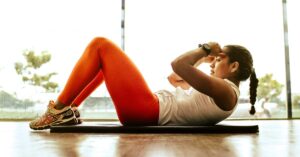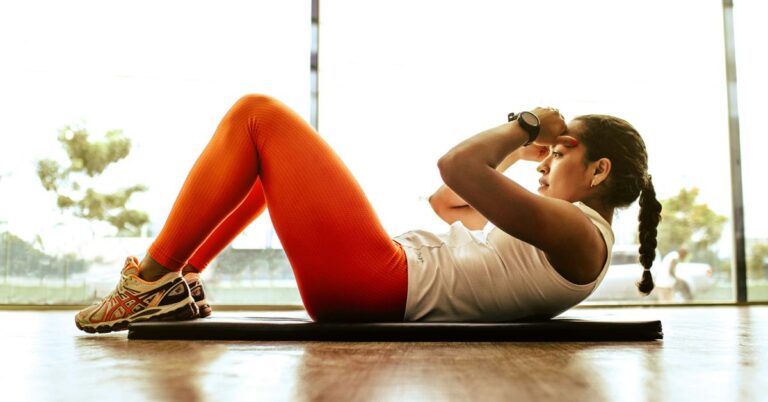Balancing Strength Training and Flexibility for Optimal Health
In the ever-evolving landscape of fitness, the importance of both strength training and flexibility is often debated. Some gym-goers swear by heavy lifting, while others preach the virtues of yoga and stretching. But what if the secret lies not in choosing one over the other but in finding a harmonious balance between the two? After all, who doesn’t want to be strong enough to lift their own weight while also being flexible enough to bend down and tie their shoes without pulling a muscle?
The Foundation: Why Strength Matters
Strength training, often dubbed resistance training, is the cornerstone of any fitness regimen. Whether you’re hoisting dumbbells, using resistance bands, or even lifting your own body weight, the benefits are plentiful. According to the American College of Sports Medicine, incorporating strength training into your routine can help improve muscle mass, bone density, and metabolic rate—who wouldn’t want a little extra boost to their metabolism?
But let’s be real for a moment. I remember when I first stepped into a gym and was greeted by the sight of bulging biceps and grunting bodies. It was intimidating, to say the least. I thought, “Do I really want to do this?” The answer, as I learned, was a resounding yes. Not only does strength training enhance physical appearance (hello, toned arms!), but it also contributes to overall functional fitness. You’ll find everyday tasks—like carrying groceries or lifting your child—become less daunting.
The Flexibility Factor
On the flip side, flexibility training often plays second fiddle in the fitness arena. Many individuals view it as an afterthought, something to tack on at the end of a workout or skip altogether. But flexibility is crucial for maintaining a full range of motion in our joints and can significantly reduce the risk of injury. Imagine trying to do a squat without the ability to flex your ankles—yikes! You might end up looking like a stiff robot trying to perform a dance move.
Moreover, flexibility training can improve posture, relieve tension, and even enhance athletic performance. Just think about it: a well-stretched muscle can produce more power than a tight one. It’s a simple equation, really. And don’t forget about the mental benefits—stretching and flexibility exercises, especially those found in practices like yoga, can help reduce stress and promote relaxation. (Trust me, after a long day, there’s nothing quite like a good stretch to unwind.)
Finding the Right Balance
So, how do we strike that elusive balance between strength and flexibility? It’s a question many fitness enthusiasts grapple with. The key is to integrate both components into your routine rather than treating them as separate entities. Here are some practical strategies to consider:
- Schedule Your Workouts: Consider alternating your focus throughout the week. You might dedicate two days to strength training, two days to flexibility, and leave a day for active recovery—perhaps a brisk walk or a leisurely bike ride.
- Incorporate Stretching into Strength Training: Rather than waiting until the end of your workout to stretch, try to include dynamic stretching in your warm-up and static stretching during your cool-down. This approach not only enhances flexibility but also prepares your muscles for the work ahead.
- Use Compound Movements: Exercises like squats, deadlifts, and lunges engage multiple muscle groups and often require a certain level of flexibility. By performing these movements, you’re working on strength while simultaneously improving your flexibility.
- Consider Yoga or Pilates: These practices not only focus on flexibility but also build strength and core stability. A session of yoga can leave you feeling invigorated and limber while still reaping strength benefits.
Real-Life Applications
Take the story of my friend Mark, an avid weightlifter who once considered flexibility training a waste of time. After suffering from chronic back pain due to tight hamstrings and hip flexors, he reluctantly decided to incorporate yoga into his routine. Initially, it felt like a foreign language, but within weeks, he noticed improvements in his lifts. His squat depth increased, and his deadlift form became more stable. It struck me how the very thing he dismissed ended up being a game-changer for his strength training.
Mark’s experience is not unique. Many athletes have found that integrating flexibility training into their routines not only minimizes injuries but also enhances performance. In fact, a study published in the *Journal of Strength and Conditioning Research* found that athletes who included flexibility training experienced a significant decrease in injury rates compared to those who did not. That’s a compelling reason to reconsider how you approach your workouts!
The Role of Nutrition
Of course, we can’t talk about strength and flexibility without mentioning the importance of nutrition. A well-rounded diet fuels your body for both types of training and aids in recovery. Protein, in particular, is essential for muscle repair and growth. According to nutritionists, athletes should aim for about 1.2 to 2.0 grams of protein per kilogram of body weight, depending on the intensity of their training. (I’ll admit, I’ve had my fair share of protein shakes that tasted like chalk, but they did the trick!)
Don’t overlook hydration either. Staying well-hydrated supports muscle function and recovery, which is especially important after a rigorous strength or flexibility workout. And let’s not forget about those lovely antioxidants found in fruits and vegetables—these can help reduce inflammation and keep your body operating at its best.
Common Misconceptions
As we delve deeper into this topic, it’s crucial to address some common misconceptions surrounding strength training and flexibility. For instance, many people believe that lifting weights will automatically lead to a loss of flexibility. This isn’t entirely true. While certain strength training methods can lead to tightness if not balanced with flexibility work, the right approach can actually enhance your range of motion.
Another myth is that flexibility training is only for those who are already limber. Not the case! Everyone, regardless of their current flexibility level, can benefit from stretching and flexibility training. It’s about progression. Start where you are, and before you know it, you might be able to touch your toes without breaking a sweat.
Incorporating Flexibility into Daily Life
Let’s face it—finding time to hit the gym can feel like a Herculean task, especially for those of us juggling work, family, and social obligations. However, flexibility training doesn’t have to be confined to the gym. There are plenty of ways to weave stretching into your daily routine. Here are a few suggestions:
- Morning Stretching: Start your day with a few minutes of stretching. It can be as simple as reaching for the sky and then bending down to touch your toes while still in your pajamas. (Trust me, it feels good!)
- Desk Stretches: If you work a desk job, incorporate quick stretches throughout the day. Standing up and stretching your back or neck every hour can work wonders.
- Active Commuting: If you can, walk or bike to work. This not only gets your blood flowing but also incorporates some natural flexibility training as you move your body.
Listening to Your Body
One of the most vital aspects of balancing strength training and flexibility is understanding your body’s signals. There will be days when you feel like a superhero, ready to lift mountains or bend like a pretzel. Other days, your body might scream at you to take it easy. Paying attention to these cues is crucial. Ignoring them can lead to injuries, which nobody wants—especially if it sidelines you from your beloved workouts.
It’s also essential to remember that progress in both strength and flexibility takes time. Don’t be discouraged if you can’t touch your toes right away, or if your deadlift isn’t progressing as quickly as you’d like. Consistency is key. Celebrate the small victories—like finally being able to do a full squat or holding a challenging yoga pose for longer than a few seconds.
Consulting Experts
As you navigate the balance between strength training and flexibility, don’t hesitate to seek guidance from fitness professionals. Personal trainers or physical therapists can provide tailored recommendations based on your individual needs and goals. And let’s not forget about group classes—whether it’s lifting or yoga, the energy of a group can be incredibly motivating.
In my earlier gym days, I signed up for a few fitness classes that changed my perspective. Not only did I learn new techniques, but I also made connections and found a supportive community. Plus, nothing beats the camaraderie of sweating it out together while trying not to fall over during a balance exercise!
Final Thoughts
In conclusion, the quest for optimal health is a multifaceted journey that requires a thoughtful balance of strength training and flexibility. Embrace the idea that these two elements can coexist beautifully within your workout routine. By prioritizing both, you’ll not only enhance your physical capabilities but also improve your overall quality of life.
So, whether you’re lifting weights or mastering that elusive yoga pose, remember that it’s all part of a broader picture—one that leads to a healthier, happier you. And who knows? In the process, you might just discover a newfound love for that stretching routine you once dreaded. After all, life is too short not to be strong and limber!
So, lace up those sneakers, roll out your yoga mat, and let’s get to work on creating a balanced, vibrant version of ourselves.









